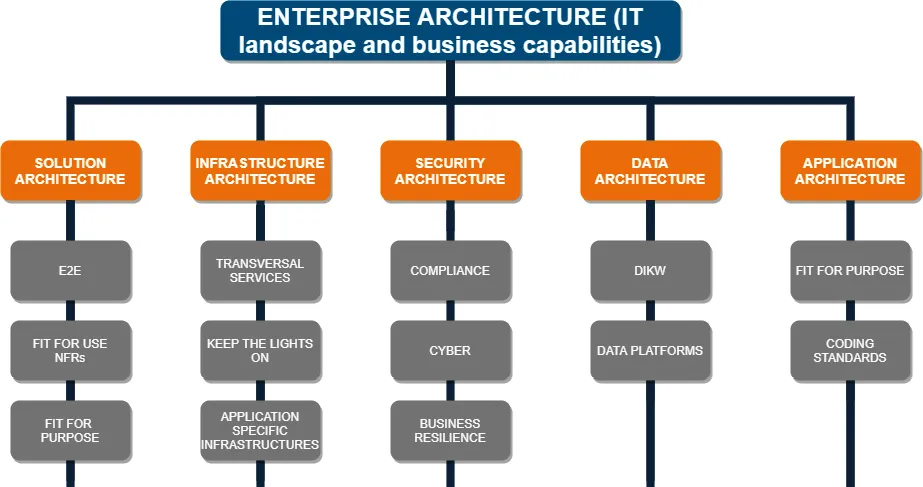
Software Architecture for Busy Developers
Stephane Eyskens
- 174 pagine
- English
- ePUB (disponibile sull'app)
- Disponibile su iOS e Android
Software Architecture for Busy Developers
Stephane Eyskens
Informazioni sul libro
A quick start guide to learning essential software architecture tools, frameworks, design patterns, and best practicesKey Features• Apply critical thinking to your software development and architecture practices and bring structure to your approach using well-known IT standards• Understand the impact of cloud-native approaches on software architecture• Integrate the latest technology trends into your architectural designsBook DescriptionAre you a seasoned developer who likes to add value to a project beyond just writing code? Have you realized that good development practices are not enough to make a project successful, and you now want to embrace the bigger picture in the IT landscape? If so, you're ready to become a software architect; someone who can deal with any IT stakeholder as well as add value to the numerous dimensions of software development.The sheer volume of content on software architecture can be overwhelming, however. Software Architecture for Busy Developers is here to help. Written by Stephane Eyskens, author of The Azure Cloud Native Mapbook, this book guides you through your software architecture journey in a pragmatic way using real-world scenarios. By drawing on over 20 years of consulting experience, Stephane will help you understand the role of a software architect, without the fluff or unnecessarily complex theory.You'll begin by understanding what non-functional requirements mean and how they concretely impact target architecture. The book then covers different frameworks used across the entire enterprise landscape with the help of use cases and examples. Finally, you'll discover ways in which the cloud is becoming a game changer in the world of software architecture.By the end of this book, you'll have gained a holistic understanding of the architectural landscape, as well as more specific software architecture skills. You'll also be ready to pursue your software architecture journey on your own - and in just one weekend!What you will learn• Understand the roles and responsibilities of a software architect• Explore enterprise architecture tools and frameworks such as The Open Group Architecture Framework (TOGAF) and ArchiMate• Get to grips with key design patterns used in software development• Explore the widely adopted Architecture Tradeoff Analysis Method (ATAM)• Discover the benefits and drawbacks of monoliths, service-oriented architecture (SOA), and microservices• Stay on top of trending architectures such as API-driven, serverless, and cloud nativeWho this book is forThis book is for developers who want to move up the organizational ladder and become software architects by understanding the broader application landscape and discovering how large enterprises deal with software architecture practices. Prior knowledge of software development is required to get the most out of this book.
Domande frequenti
Informazioni
Section 1: Introduction
- Chapter 1, Introducing Software Architecture
Chapter 1: Introducing Software Architecture
- Software architecture in a nutshell
- A software architect's duties
- Introducing the different architecture disciplines
- Positioning software architecture within the global architecture landscape
Software architecture in a nutshell
A software architect's duties
- Addressing both functional requirements (FRs) and non-functional requirements (NFRs): As you know, FRs are the primary trigger to design a solution. Whether the solution/service is designed for the business or for the Information Technology (IT) department itself, you make your business case and then start the design work. NFRs (availability, security, disaster recovery (DR), and so on) are not always expressed but are also particularly important and are often the most challenging part.This book will help you address these requirements in a structured way. Addressing both FRs and NFRs is also the duty of a solution architect, so it can be debated whether this should fall under the duties of a software architect or not. I think that a good software architect is able to address FRs. An excellent software architect can address both while addressing FRs in a more in-depth way than a solution architect.
- Providing technical standards, coding guidelines, and design patterns to developers: Functional features are an integral part of the code base. It's a no-brainer that good design patterns usually improve the resulting quality of a solution. As a software architect, you must understand them and you must be able to sense which pattern is valuable in your own context. We will dive into design patterns in Chapter 5, Design Patterns and Clean Architecture, as well as in Chapter 6, Impact of the Cloud on the Software Architecture Practice, where we will explore cloud and cloud-native patterns.
- Interacting with stakeholders to ensure developed applications land smoothly in the company's landscape: A successful software architect understands multilateral concerns. They are able to interact with security, infrastructure, solution, and enterprise architects, as well as with developers. This book will give you the essential keys to achieve T-shaped skills, which means being an expert in a given field (the base of the T) but also knowledgeable across disciplines (the top of the T). To reinforce your T top bar, we will explore some fundamentals of enterprise architecture (EA), which is a common practice in large organizations, and we will touch on some infrastructure and security typical frameworks. However, I have to manage your expectations here, as the book will only introduce these topics.
- Performing an active role in the solution delivery process: A close follow-up with the development teams and a good understanding of waterfall and agile methodologies will undoubtedly lead to a smoother delivery.
- Proactive technology watching to identify new trends and paradigm shifts: Technology is an enabler. Most digital native companies managed to leverage technology wisely and they became Netflix, Facebook, and the like. A good software architect must permanently keep an eye on the ever-evolving technology landscape.
Introducing the different architecture disciplines
